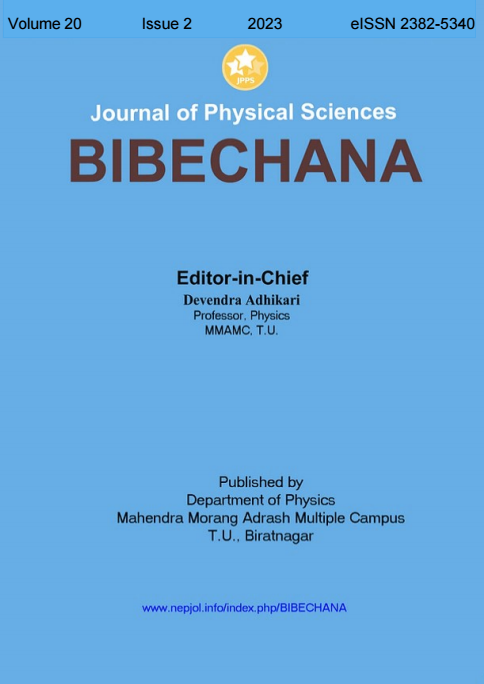Caputo-Fabrizio approach to numerical fractional derivatives
DOI:
https://doi.org/10.3126/bibechana.v20i2.53971Keywords:
Caputo fractional derivatives, Numerical solution, Analytical Solution, Lagrange interpolation, L1-2 formula, L1 formulaAbstract
Fractional calculus is an essential tool in every area of science today. This work gives the quadratic interpolation-based L1-2 formula for the Caputo-Fabrizio derivative, a numerical technique for approximating the fractional derivative. To get quadratic and cubic convergence rates, respectively, we study the use of Lagrange interpolation in the L1 and L1-2 formulations. Our numerical analysis shows the accuracy of the theory’s predicted convergence rates. The L1-2 formula aims to enhance the accuracy and usability of a flexible tool for many applications in science and mathematics. We demonstrate the validity of the theory’s predicted convergence rates using numerical analysis. Several numerical examples are also given to show how the suggested approaches may be utilized to determine the Caputo-Fabrizio derivative of well-known functions. Lagrange interpolation is used in the L1 and L1-2 procedures to obtain quadratic and cubic convergence rates, respectively. The numerical study demonstrates that the L1-2 formula offers greater accuracy when compared to current approaches. In addition, it is a better apparatus for several applications in science and mathematics. Due to its higher convergence rate, the L1-2 formula outperforms other available numerical methods for scientific computations. The L1-2 formula, a novel numerical method for the Caputo-Fabrizio derivative that makes use of quadratic interpolation, is introduced in this study as a conclusion.
Downloads
Downloads
Published
How to Cite
Issue
Section
License
Copyright (c) 2023 Shankar Pariyar, Jeevan Kafle

This work is licensed under a Creative Commons Attribution-NonCommercial 4.0 International License.
This license enables reusers to distribute, remix, adapt, and build upon the material in any medium or format for noncommercial purposes only, and only so long as attribution is given to the creator.




